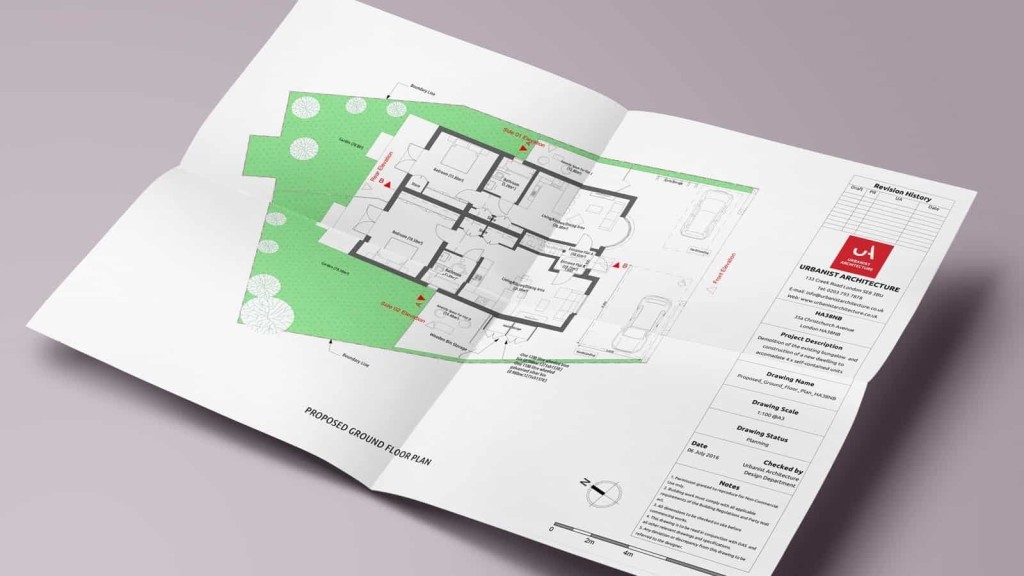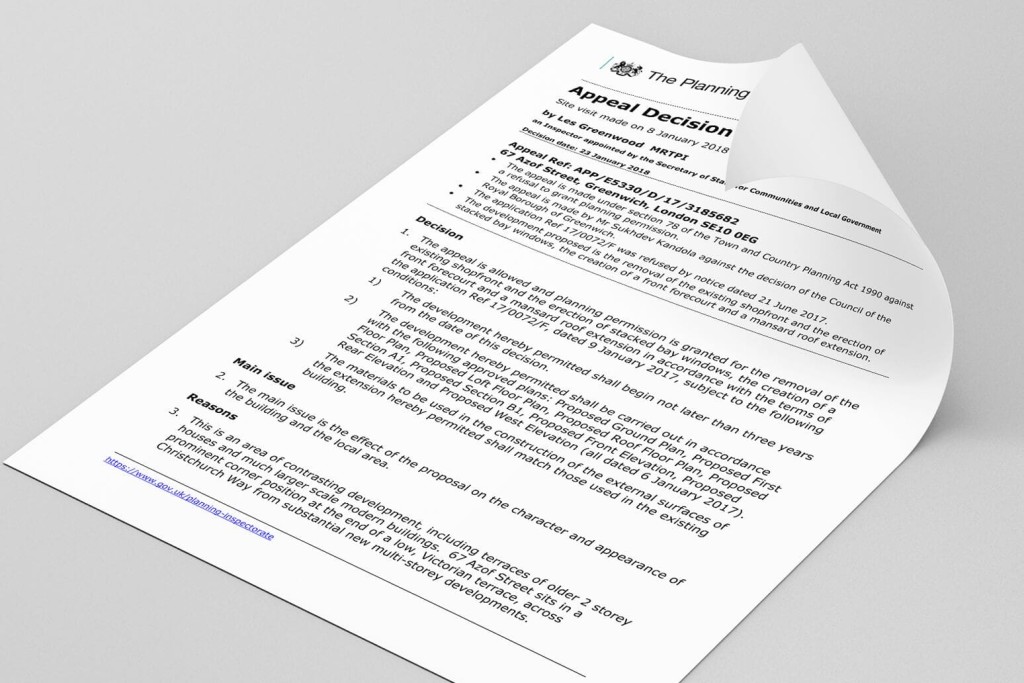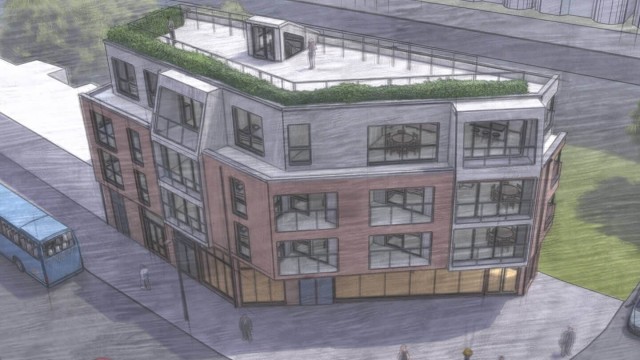Read next
The latest news, updates and expert views for ambitious, high-achieving and purpose-driven homeowners and property entrepreneurs.


Has your planning application recently been refused and you feel it hasn’t been assessed fairly? Do you feel you’ve exhausted all efforts to influence planning for your development?
There might be a way for you to turn your luck around. While nothing in life is free, you should be aware any one of these options might cost you a pretty penny and there’s no guarantee they will apply or even be available to you. So consider your options carefully before taking the plunge.
However, if you’re willing to do whatever it takes to make your dreams come true, read on, as this article will outline five ways you can secure planning permission, even after your planning application has been refused.

If you believe that your application is going to be refused, it’s not too late to turn it around before you’re given the decision. If you know that with a few alterations your development could be given the green light, instruct your planning consultant or architect to withdraw the application, make the changes and resubmit.
Please be aware that you have 12 months to resubmit a full planning application, and this should not incur any council additional fees. If your case is a householder planning application, then you have 12 weeks during which you can appeal against the decision of your planning application.
We know this can be a hassle, which is why we’re here to help you do everything you can to achieve planning consent, whatever your motivations. Take a look at some of our residential projects today.
Having worked in all boroughs in London and with many other councils around the rest of the UK, we know their local planning policies and requirements inside out. Our rigorously tested system allows us to specialise in crafting creative planning application strategies for residential developments with sensitive planning conditions and restrictions.
With a dedicated focus in developing good design with our clients and seeking collaborative negotiation with planning officers, we secure planning permissions for unprecedented and quite exceptional projects.

If your application has been refused, let’s start with your most obvious redress – an appeal.
When should you appeal? If you feel your planning application has been unfairly assessed or you (or your advisers) feel that the council hasn’t acted in line with its own policies.
There are three options available to you: in writing, at an informal hearing or via a public inquiry. The most common method is through a written representation. You can make an appeal to the Planning Inspectorate about your planning application if:
A written planning appeal will require an outline of all of the reasons you believe your planning application should have received planning permission. Your planning consultant and architect should detail these as thoroughly as possible and focus on the planning merits applicable to your development.
According to the Planning Inspectorate’s records, approximately one in four appeals are successful, which is why you should only go down this route if you have been advised that your application abides by planning regulations and you’re unwilling to amend your plans to address any objections.
Once the Planning Inspector has made their decision, there is no further right of appeal on the merits of the decision. In this case, you may want to consider one of the following options.
At Urbanist Architecture, we know how stressful this planning appeal process can be, and with our knowledge of local planning departments, we can help ease some of your worry. As our client, we can carry out a full assessment of your refused planning application; formulate your planning appeal strategy; prepare grounds of appeal, and prepare a full statement of your case.
We have presented appeals for numerous homeowners and developers and liaised with the Planning Inspectorate on their behalf and have a track record for winning planning appeals for contentious planning cases. We can help you too!

If you feel you have been slighted due to the way your local planning authority has decided your planning application, and you have not had a statutory right to appeal, contacting The Local Government & Social Care Ombudsman (often referred to as the LGO) could prove useful.
This option can only be used in cases of “maladministration” as the LGO’s primary concern is with the methods used/not used to come to a decision, as opposed to the merits of the case. For example, if the local planning authority has:
If any of these apply, write a letter to the chief executive or senior officer of the local planning authority outlining the issue of your planning application. If, after a reasonable amount of time has passed, you have not received a response or if the response is unsatisfactory, you can then involve the LGO.
You need to ensure that your complaint is within 12 months from the date the issue was first identified and your case complies with the restrictions that apply to the type of complaints the LGO can pursue.
If the authority is found to have acted improperly, the Ombudsman will assess the situation and whether their fault(s) impacted the outcome. Keep in mind, however, that the LGO has no power to reverse planning decisions or to make a local authority pay compensation.
That said, if the investigations reveal maladministration, in most cases the local authority agrees to make whatever redress the Ombudsman recommends.

If you are concerned your local planning authority has gone beyond its statutory powers or misinterpreted the law, a judicial review might be the option for you. In these cases, the decision is challenged in High Court and subsequent decisions are typically made within six weeks.
This route is available to anyone unhappy with a decision made by the local planning authority, Planning Inspectorate, or anyone with sufficient interest in the matter. Just bear in mind the judicial review is primarily concerned with the legality of a case as opposed to its merit.
It is prudent to note that the time limit to start proceedings is generally 3 months from the decision date. For planning cases challenging the adoption of a local plan document or for the Secretary of State to grant permission, the time allotted is limited to 6 weeks.
High Court hearings can cost upward of £10,000 and applicants must agree to pay these costs if they lose the case. Therefore, it may be wise to seek professional advice from a planning solicitor before speeding down this road.

If you’re in a position where you have received planning permission but an application has been submitted to the County or High Courts for an injunction to stop or prevent your works, the decision will depend on a legal hearing of the dispute.
Covenants may restrict the use or housing density on your land and, if enforced, may provide a means of opposing your development as planning permission does not override a covenant.
You may apply to the Lands Tribunal to have a covenant removed, which would likely result in a hearing for all interested parties to make representations. If you are found to have breached a covenant, the injunction may be served.
Note that a lot of research will likely be required to establish the existence and effectiveness of a covenant, involving a search of property deeds and a discussion with the Land Registry.
Applicants would generally be advised to seek legal advice before serving an injunction, as they would likely have to sign an agreement whereby they must pay for damages in the event that the request is withdrawn. This could potentially work out in your favour.

Let’s say all goes well – you’ve finally been granted permission for your planning application and you’ve begun construction. But it’s not over yet…
If someone occupies a property adjoining your proposed development, they may have rights under the ‘Rights of Light Act 1959’. In this case, be aware they may be able to obtain an injunction to stop or even prevent your proposed works if they consider or are advised that your development is in breach of this act. Just food for thought when submitting your planning application.
We’re not trying to put you off, in fact, we encourage you to fight for your development. And if you need a hand, you know where to find us!
Good luck!
Urbanist Architecture is a London-based RIBA chartered architecture and planning practice with offices in Greenwich and Belgravia. With a dedicated focus in proven design and planning strategies, and expertise in residential extensions, conversions and new build homes, we help homeowners to create somewhere they enjoy living in and landowners and developers achieve ROI-focused results.
If your application has been refused or you’ve been told it will be refused and you would like us to help you with submitting a revised design or an appeal, please don’t hesitate to get in touch.

Nicole I. Guler BA(Hons), MSc, MRTPI is a chartered town planner and director who leads our planning team. She specialises in complex projects — from listed buildings to urban sites and Green Belt plots — and has a strong track record of success at planning appeals.
We look forward to learning how we can help you. Simply fill in the form below and someone on our team will respond to you at the earliest opportunity.
The latest news, updates and expert views for ambitious, high-achieving and purpose-driven homeowners and property entrepreneurs.
The latest news, updates and expert views for ambitious, high-achieving and purpose-driven homeowners and property entrepreneurs.










We specialise in crafting creative design and planning strategies to unlock the hidden potential of developments, secure planning permission and deliver imaginative projects on tricky sites
Write us a message